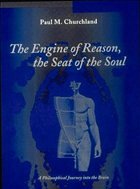A new picture of the mind is emerging, and explanations now exist for what has so long seemed mysterious. This real understanding of how the biological brain works -- of how we work -- has generated a mood of excitement that is shared in a half-dozen intersecting disciplines. Philosopher Paul Churchland, who is widely known as a gifted teacher and expository writer, explains these scientific developments in a simple, authoritative, and pictorial fashion. He not only opens the door into the ongoing research of the neurobiological and connectionist communities but goes further, probing the social and moral dimensions of recent experimental results that assign consciousness to all but the very simplest forms of animals.
In a fast-paced, entertaining narrative, replete with examples and numerous explanatory illustrations, Churchland brings together an exceptionally broad range of intellectual issues. He summarizes new results from neuroscience and recent work with artificial neural networks that together suggest a unified set of answers to questions about how the brain actually works; how it sustains a thinking, feeling, dreaming self; and how it sustains a self-conscious person.
Churchland first explains the science -- the powerful role of vector coding in sensory representation and pattern recognition, artificial neural networks that imitate parts of the brain, recurrent networks, neural representation of the social world, and diagnostic technologies and therapies for the brain in trouble. He then explores the far-reaching consequences of the current neurocomputational understanding of mind for our philosophical convictions, and for our social, moral, legal, medical, and personal lives.
Churchland's wry wit and skillful teaching style are evident throughout. He introduces the remarkable representational power of a single human brain, for instance, via a captivating brain/World-Trade-Tower TV screen analogy. 'Who can be watching this pixilated show?' Churchland queries; the answer is a provocative 'no one.' And he has included a folded stereoscopic viewer, attached to the inside back cover of the book, that readers can use to participate directly in several revealing experiments concerning stereo vision.
A Bradford Book
Review text:
'Paul Churchland's The Engine of Reason, the Seat of the Soul is an outstanding philosophical achievement, integrating artificial intelligence, brain neurology, cognitive psychology, ethnology, epistemology, scientific method, and even ethics and aesthetics, into an interlocking whole.'
-- W.V. Quine, Professor of Philosophy, Harvard University
'...The Engine of Reason, the Seat of the Soul [is] a very important book full of tantalizing and astute observations and insights about consciousness, thinking and thought. Its sweep encompasses morality, politics, the arts, education, penology, psychiatry and the very nature of freedom itself. This is a book to be reckoned with.'
-- Los Angeles Times
In a fast-paced, entertaining narrative, replete with examples and numerous explanatory illustrations, Churchland brings together an exceptionally broad range of intellectual issues. He summarizes new results from neuroscience and recent work with artificial neural networks that together suggest a unified set of answers to questions about how the brain actually works; how it sustains a thinking, feeling, dreaming self; and how it sustains a self-conscious person.
Churchland first explains the science -- the powerful role of vector coding in sensory representation and pattern recognition, artificial neural networks that imitate parts of the brain, recurrent networks, neural representation of the social world, and diagnostic technologies and therapies for the brain in trouble. He then explores the far-reaching consequences of the current neurocomputational understanding of mind for our philosophical convictions, and for our social, moral, legal, medical, and personal lives.
Churchland's wry wit and skillful teaching style are evident throughout. He introduces the remarkable representational power of a single human brain, for instance, via a captivating brain/World-Trade-Tower TV screen analogy. 'Who can be watching this pixilated show?' Churchland queries; the answer is a provocative 'no one.' And he has included a folded stereoscopic viewer, attached to the inside back cover of the book, that readers can use to participate directly in several revealing experiments concerning stereo vision.
A Bradford Book
Review text:
'Paul Churchland's The Engine of Reason, the Seat of the Soul is an outstanding philosophical achievement, integrating artificial intelligence, brain neurology, cognitive psychology, ethnology, epistemology, scientific method, and even ethics and aesthetics, into an interlocking whole.'
-- W.V. Quine, Professor of Philosophy, Harvard University
'...The Engine of Reason, the Seat of the Soul [is] a very important book full of tantalizing and astute observations and insights about consciousness, thinking and thought. Its sweep encompasses morality, politics, the arts, education, penology, psychiatry and the very nature of freedom itself. This is a book to be reckoned with.'
-- Los Angeles Times
